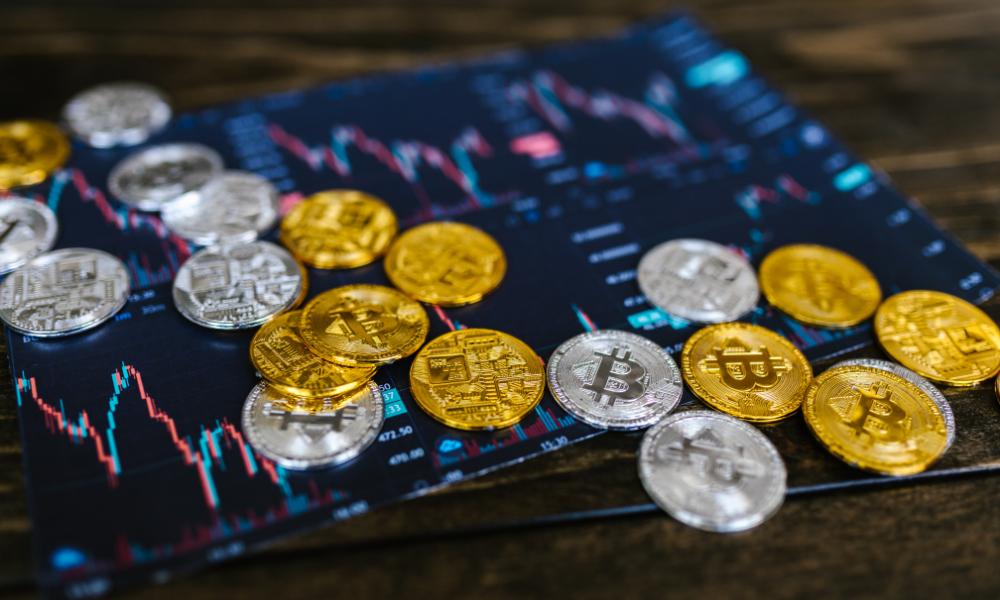
The big question on everyone’s lips in the cryptocurrency markets now is: where will this sharp sell-off end? On top of that, many people are asking what happened to the supposed zero correlation between crypto and traditional assets — the idea that bitcoin and other currencies offered a hedge against declines in securities such as equities and bonds.
They point out that we have seen crypto and equity markets coming down together recently in the face of the same macroeconomic headwinds. Are these markets correlated after all?
A flight to quality occurs at times of economic uncertainty, during which investors rebalance their portfolios and move out of volatile assets (high-risk high-return) such as equities to lower-risk lower-return assets, such as bonds or cash.
Top THREE Award-Winning Brokers in 2022 LiteFinance IC Markets Avatrade |
Even before the latest turmoil the correlation between bitcoin, the leading cryptocurrency, was not zero, but it was low to medium.
Research shows that this relationship has now moved to a highly positive correlation, from 0.5 to 0.8 in mathematical terms. In effect, today, when the price of stocks falls, so does bitcoin.
What has caused this sudden change and what does it mean for investors? I think bitcoin as an uncorrelated asset class is clearly a victim of its own success. Over the past 12 to 18 months we have seen a large increase in institutional capital flowing into digital assets.
A 2021 study from the digital assets arm of Fidelity indicated that 70 per cent of institutional investors surveyed expected to buy or invest in digital assets in the future, and more than 90 per cent of those interested in digital assets expect to have an allocation in their institutions’ or clients’ portfolios within the next five years.
An investment opportunity originally driven by innovative retail investors has now gone mainstream and so it experiences the same market swings as other high-risk investments. This means that those institutional buyers are buying and selling crypto as they are other high-risk investments.
Please use the sharing tools found via the share button at the top or side of articles. Copying articles to share with others is a breach of FT.com T&Cs and Copyright Policy.
Email licensing@ft.com to buy additional rights. Subscribers may share up As long as the institutions remain involved, there is every chance that this relationship will stay in place — crypto will remain correlated with risk-on assets. It is unlikely to be a hedge against equities at a time of economic uncertainty.
It is worth noting that there are thousands of different crypto tokens and all are not born equal. The majority of the structured investment products — and indices used by institutional investors will be based on “blue-chip” assets such as bitcoin and ether, the largest crypto markets by capitalization.
In times of high volatility, it is prudent to move to more stable assets. Within the crypto ecosystem, an investor can — in principle — swap a volatile token into a stablecoin, for example, which enables the holder to fix their capital against a real-world asset such as fiat currency, including US dollars, pounds and euros, or a precious metal such as gold.
But, if a flight to safety is the intention, why continue using crypto at all instead of moving capital back into cash, where it is guaranteed in a bank?
One good reason is that you make your crypto holdings work for you in terms of obtaining a return by lending the stablecoin via a platform. These platforms can be centralized (run by a core team) or decentralized — built by and maintained by a community of core contributors — and they can offer significantly more return on a loan — about 10 per cent a year for stablecoin — than a traditional bank.
| 🔷 Wise Traders Best Choice - AssetsFX 🔷 |
While this is fine in theory, in practice a big problem has emerged in the recent market turmoil with the collapse of a stablecoin called UST — the stablecoin pegged to the US dollar, an algorithm-based token native to the terra blockchain.
Also, Celsius, a crypto lending platform with over $20bn in assets, has frozen clients’ withdrawals of stablecoin due to liquidity difficulties.
As with investing in any other asset, conducting your own due diligence is paramount to understanding the risks involved.
Unfortunately, at this stage most of the industry is unregulated and the protections we take for granted when purchasing financial services are not generally provided in the crypto world.
This is changing, with both governments and financial services regulators recognizing the adoption and significance of the promise the technology brings to wider society. In the UK, the Financial Conduct Authority is developing new guidelines and guardrails to protect consumers.
But in the meantime, investors are largely on their own as they cope with drastic price falls and the pressures now threatening the financial stability of some individual crypto companies.
Hot Topics
Oil Rises As Supply Concerns Outweigh U.S. Fuel Stocks Build
Why Aren't Baby Formula Stock Rates Getting Better?
US Is Already In A ‘Soft’ Recession, Top Economist Says
They also face risks that the market turmoil will reveal more about the criminals operating in crypto markets, as often happens in difficult times in the financial world when liquidity suddenly disappears. Source: Financial Time